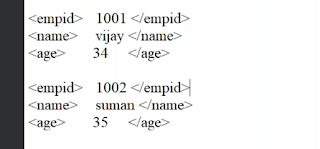Calling the RFC Function Module via RFC Destination
Requirement :-
- We have created and RFC function module in the previous part and then we created a RFC destination for the same.
Solution :-
-
Step 1 :- Go to SE38 transaction code and create a executable program.
-
Step 2 :- Create the type structure and corresponding internal table and work area for the same.
-
Step 3 :- Create a select option to take range of inputs from the user.
-
Step 3 :- Now we will the call the function module and will pass the destination name for our function module.
-
Step 4 :- Now we can display the data in form of ALV using CL_SALV_TABLE class.
Code :-
*&---------------------------------------------------------------------*
*& Report ZAR_CALLING_RFC
*&---------------------------------------------------------------------*
*&
*&---------------------------------------------------------------------*
REPORT zar_calling_rfc.
TYPES : BEGIN OF ty_vbak,
vbeln TYPE vbeln_va,
erdat TYPE erdat,
erzet TYPE erzet,
ernam TYPE ernam,
vbtyp TYPE vbtypl,
END OF ty_vbak.
DATA : lt_vbak TYPE TABLE OF ty_vbak,
ls_vbak TYPE ty_vbak.
DATA : lv_vbeln TYPE vbeln_va.
SELECT-OPTIONS : s_vbeln FOR lv_vbeln.
CALL FUNCTION 'ZAR_RFC_FUNCTION_MODULE' DESTINATION 'ZAR_CONNECTION'
EXPORTING
p_sales_document = s_vbeln[]
IMPORTING
LT_TABLE = lt_vbak
.
TRY.
CALL METHOD cl_salv_table=>factory
EXPORTING
list_display = IF_SALV_C_BOOL_SAP=>FALSE
IMPORTING
r_salv_table = data(lo_alv)
CHANGING
t_table = lt_vbak
.
CATCH cx_salv_msg.
ENDTRY.
lo_alv->display( ).
Execute the Code :-
- Press F8.
.png)
.png)
.png)
.png)
.png)
.png)
.png)
.png)

Comments
Post a Comment